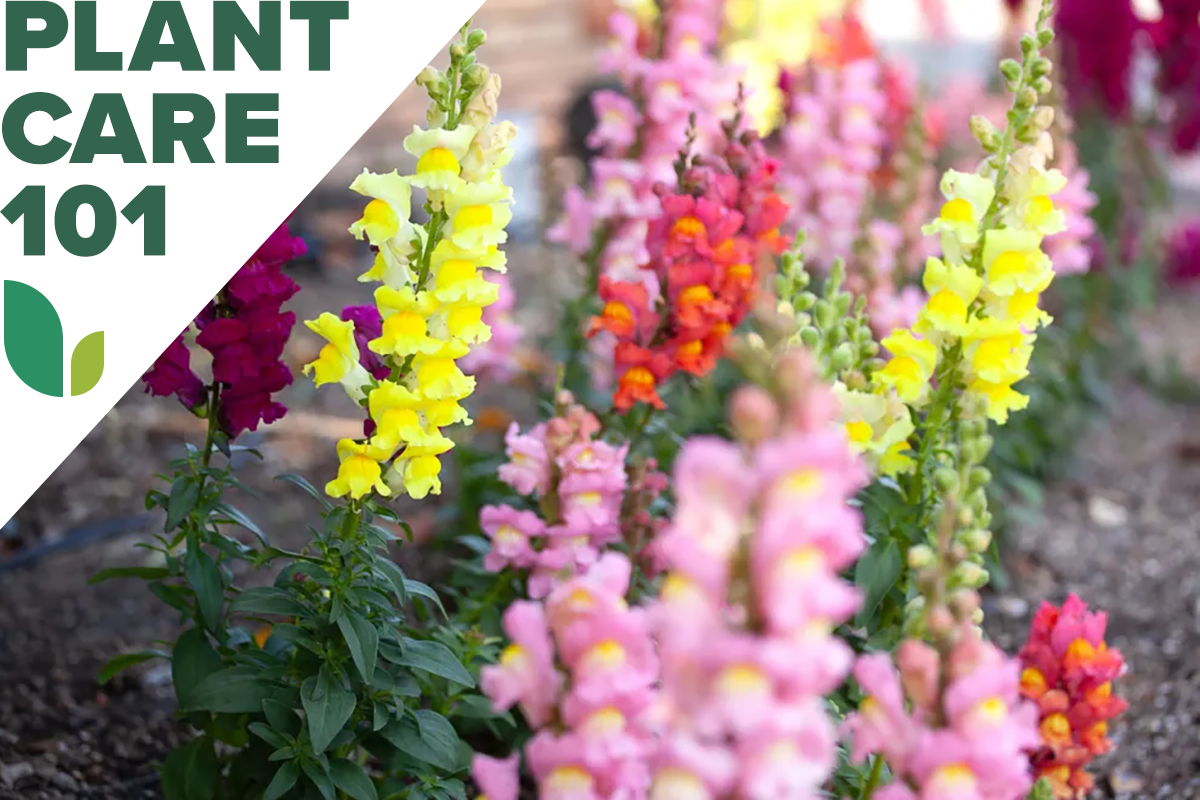

We may earn revenue from the products available on this page and participate in affiliate programs. Learn More ›
Gladiolus plants grow a classic garden flower that makes a beautiful, showy addition to any garden. From brilliant sunset colors to deep, velvety purple, gladiolus flowers look stunning in floral arrangements, but they also have big benefits for gardens as companion plants. The flowers are a favorite of hummingbirds, butterflies, and other pollinators, so they are a welcome sight in any garden. They’re also deer-resistant and bloom continuously from midsummer through the last frost of fall. Caring for gladiolus requires a few steps, but the flowers are well worth the effort.
Growing Gladiolus at a Glance
Common Name: Gladiolus, glads, sword lily
Scientific Name: Gladiolus spp.
Hardiness Zone: 7 to 10 (down to 5 or 6 if dug up in winter)
Soil: Loamy, sandy, quick-draining soil
Light: Full sun
Water: Regular
Food: At planting and during time of growth
Propagation: Corms (division)
Safety: Toxic to dogs, cats, and horses
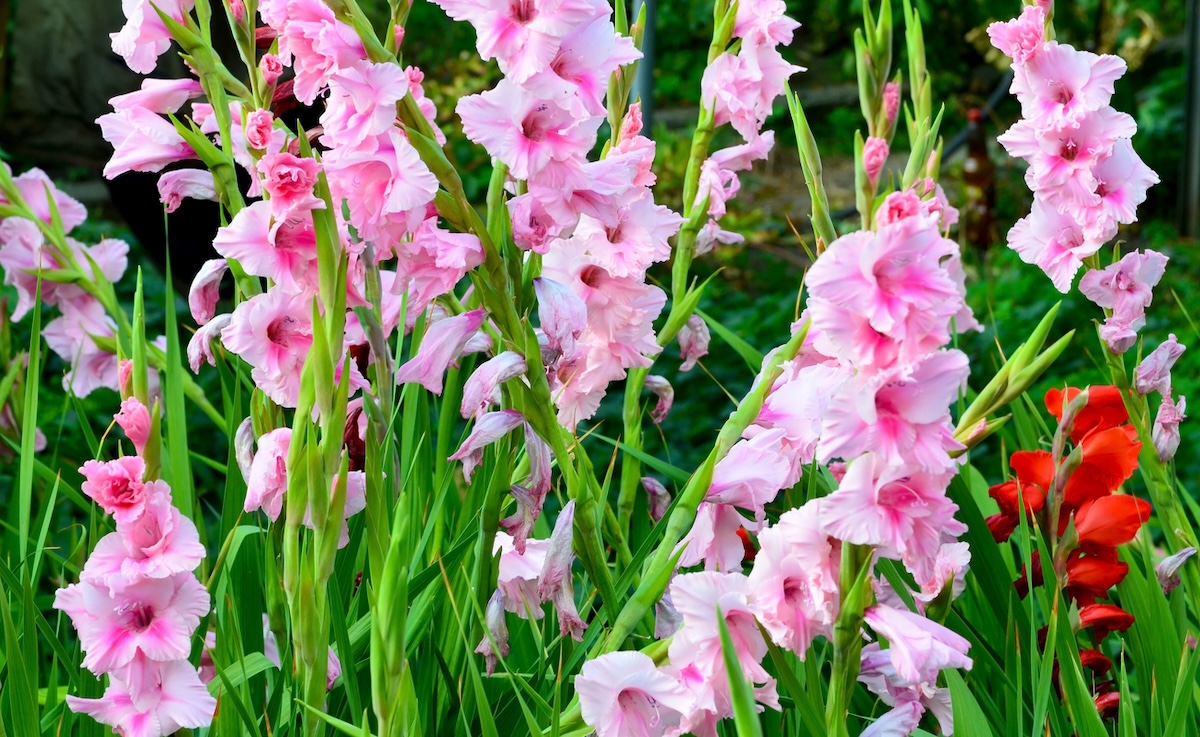
Gladiolus Characteristics
Gladioli are also known as sword lilies because of their large, sword-like blades. Though some miniature varieties can grow as low as 1½ to 2 feet, most gladiolus species reach heights between 4 and 5 feet tall. Gladiolus flowers average from 2 to 4 inches in diameter, with giant hybrids getting blooms as big as 5 inches. Flowers form on long spikes that typically grow 2 to 3 feet, making excellent cut flowers.
“Gladiolus flowers are celebrated for their striking appearance and the rich symbolism they carry,” says Juan Palacio, CEO of BloomsyBox, an online floral delivery service. “Traditionally, these flowers symbolize strength of character, sincerity, and love. Their vertical blossoms can also signify reaching towards one’s full potential, making them a meaningful addition to any garden or bouquet,” he says.
Recommended Gladiolus Varieties
From velvety reds to pristine whites, gladiolus flowers come in a wide range of colors. Hybrids include small, medium, large, and giant. “Typical” garden gladioli fall into the medium to large range.
- Black Sea: Deep red flowers grow to 3 or 4 inches wide on stalks that reach between 3 and 4 feet tall.
- White Prosperity: Large, pristine white flowers that grow to 4 inches with plant heights up to 5 feet.
- Mon Amour: The overall plant height is between 4 and 5 feet, with flowers in a combination of pastel pink, butter yellow, and ivory.
- Charming Beauty Hardy Mini: A dwarf glad that grows to a maximum height of 2 feet with prolific 2-inch pink blooms.
- Large Flowering Lumiere: Big pink blooms of up to 5 inches on flower stems at least 3 feet long, with a total growth of 4 feet.
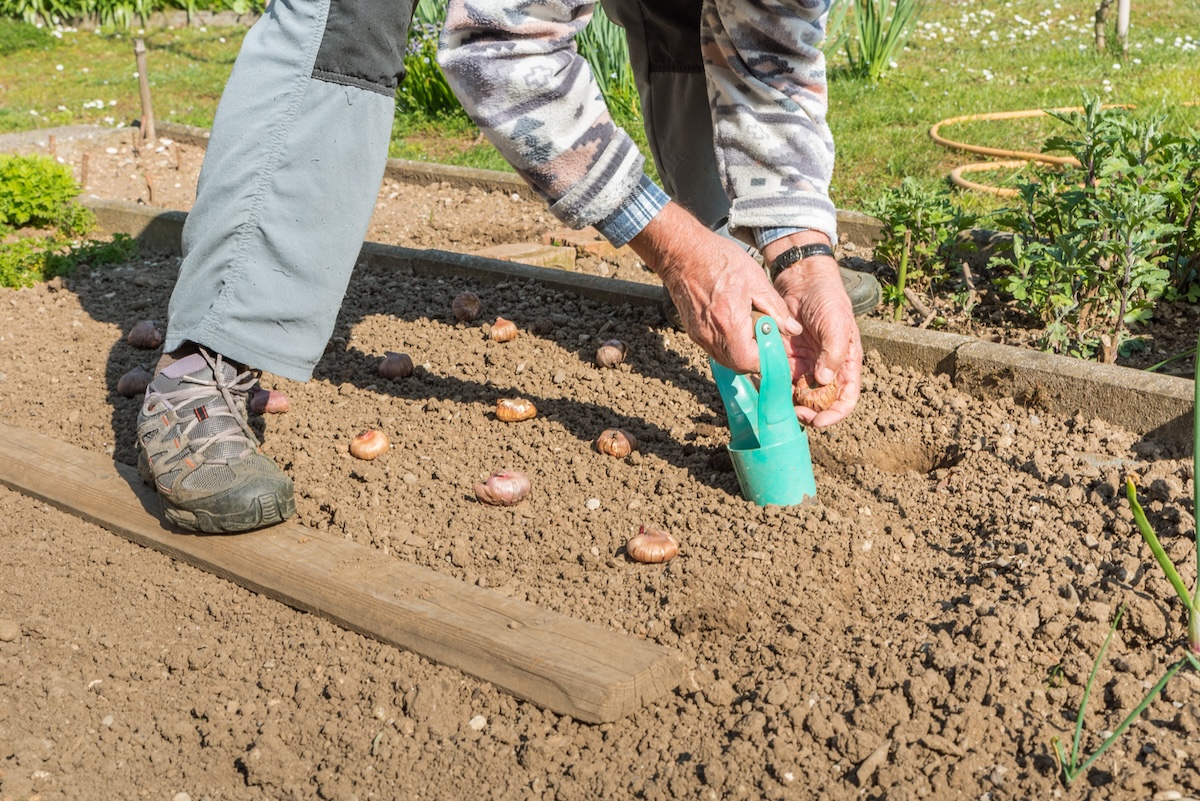
Planting Gladiolus
Gladioli thrive in well-draining, slightly sandy soil and grow best in full sun, though some varieties are more tolerant of partial shade.
When is the best time to plant gladiolus?
Gladiolus bulbs should be planted in early spring, usually 2 weeks before the last expected frost date in spring. Depending on the USDA Plant Hardiness Zone, this could be anywhere from late February to early May. Many gardeners plant gladioli regularly every 10 to 14 days beginning in late spring through early summer to ensure the flowers keep coming through the fall.
Where can gladiolus grow?
In Zone 7 and up, gladiolus is a perennial bulb (corm). Those who live in colder zones can dig up and store the bulbs over winter and replant them each year. Some gardeners in Zones 5 and 6 may be able to mulch enough to overwinter corms in the ground, but it is generally recommended to lift them in the fall. Plant gladiolus in full sun, though some varieties can tolerate partial sun. Most grow to be at least 2 feet high, so take this into account when arranging flower beds.
How do you plant gladiolus?
The size of the bulb will determine the depth at which to plant the corms. Generally speaking, when planting gladiolus bulbs, aim for a depth of two to three times the size of the bulb (measuring from the base of the bulb). Space bulbs at least 6 inches apart and rows 2 to 3 feet apart. Many gardeners opt to plant bulbs every 10 to 14 days from the date of the last frost up until the beginning of summer to have continuous blooms throughout summer and fall.
- If you haven’t previously worked compost into the soil, apply a general bulb or all-purpose fertilizer (such as a 10-10-10) to the surface of the planting area.
- Work the fertilizer into the soil to 6 to 12 inches deep. Some gardeners opt to mix additional gladiolus fertilizer or bone meal into the soil at the bottom of each hole.
- Dig a hole of the appropriate depth for each bulb.
- Place the corm in the hole. Be sure to plant it flat-side down so that the new growth will be at the top.
- Cover with soil.
- Water.
- Add additional soil as the plant settles and grows. Be sure the soil is loamy and drains well; avoid compacting the soil.
Can you grow gladiolus in containers?
Gladiolus can be grown in containers. Ideally, opt for small or medium-size gladioli that will grow between 2 and 3 feet tall. Amend the entire container of soil with fertilizer before planting, and fertilize again throughout the growing season as the soil in containers leaches nutrients faster than in the ground. Keep the soil well watered, opting for regular deep watering rather than daily light water.
Watering Gladiolus
Gladiolus care throughout the spring and summer requires that the plants receive regular water. Aim for 1 inch of water per week rather than light daily watering. If there are periods of heat and dry weather, increase watering, but be careful not to allow the ground to remain soggy. This will rot the bulbs.
Fertilizing Gladiolus
Growing gladiolus successfully requires fertilizing. Before planting, add a rich compost to the soil and work it at least 12 inches deep. This will break down slowly and feed the corms as the plant is developing. Do this before the last frost date, as soon as the ground is workable. At the time of planting, use a granular bulb fertilizer such as bone meal or an all-purpose 10-10-10. Work the fertilizer directly into the soil where the bulbs will be planted. Once a gladiolus plant has reached at least 10 inches high, add a water-soluble fertilizer.
“As the gladiolus starts to bloom, a balanced fertilizer can promote healthy growth and vibrant flowers,” says Palacio. “Choose a fertilizer low in nitrogen and higher in potassium and phosphorus, applying it according to the package instructions to support the development of strong blooms.”
If the gladiolus bulbs will be left in the ground over winter, fertilize again in the fall with a bulb fertilizer or bone meal worked into the soil in the planting area around the bulbs.
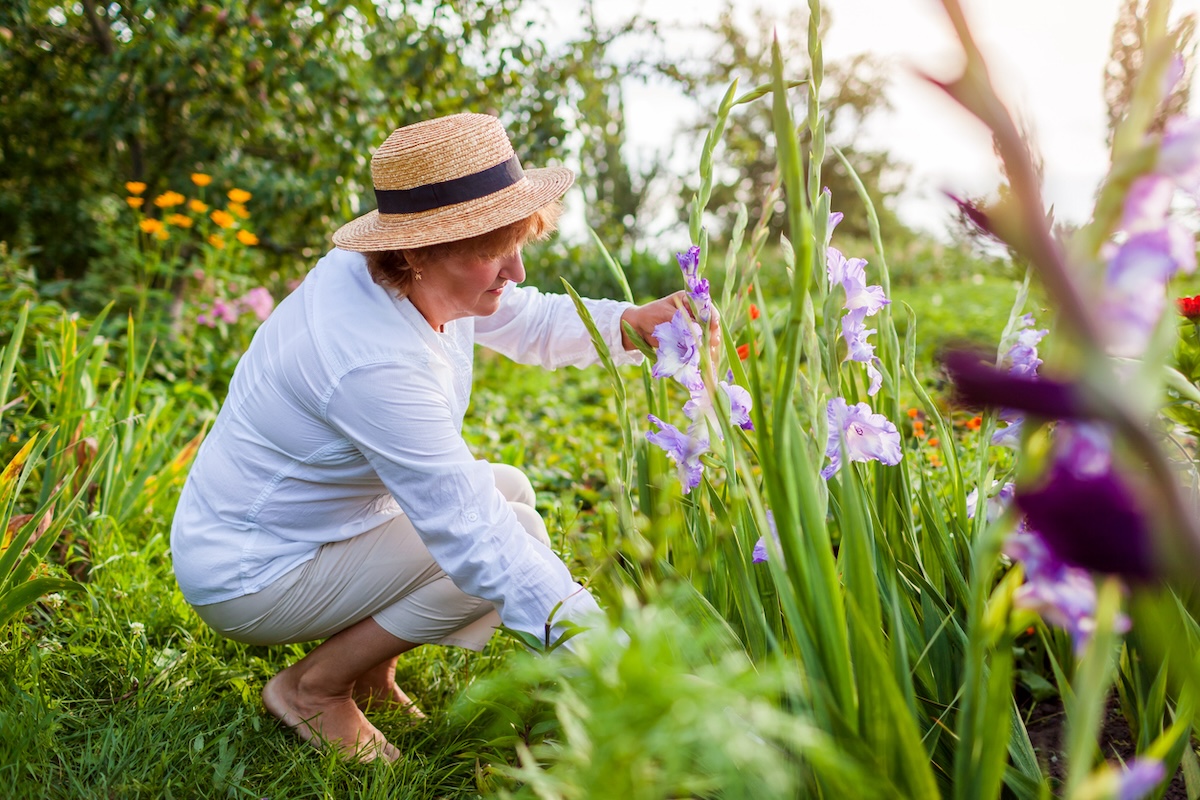
Pruning Gladiolus
Care of gladiolus requires no pruning during the growing season, but once blooms start to fade, pinching them off allows the plant to give its energy to new and existing buds. Once most of the flowers on a stalk have bloomed out, these can be cut back with sharp pruning shears or scissors. Cut at an angle at the base of where the flower stalks have sprouted.
“For those wishing to extend the beauty of gladiolus indoors, cutting them for floral arrangements is a delightful option,” Palacio says. “Cut the stems early in the morning when the lowest flowers on the spike begin to open, and immediately place them in water. With proper care, including changing the water every few days and trimming the stems, cut gladiolus can last up to 2 weeks in a vase.”
Propagating Gladiolus
Gladiolus grow from a corm, a type of bulb that is technically a squat underground stem that stores food for the plant. One of the growing stages of gladiolus is for cormels to form. These are baby plants produced from the mother corm. Cormels can be divided from mother corms and grown into individual plants. In areas with mild winters where corms don’t need to be lifted from the ground, allow the gladiolus bulbs to grow, and divide in early spring. If plants must be removed from the ground and overwintered, they can be stored and replanted in the spring.
Safety Considerations
Gladioli are toxic to dogs, cats, and horses. The corms have the highest toxicity. Symptoms include lethargy, drooling, vomiting, and diarrhea. If accidental ingestion is suspected, pet owners should contact their veterinarian immediately.
Potential Pests and Diseases
Gladiolus are susceptible to thrips, aphids, mealybugs, and spider mites, as well as diseases from rust, crown rot, Botrytis, and mosaic virus. To control pests during the growing season, use water or a mild soap spray. However, don’t treat gladioli once the blooms are opening because this will damage the flowers. If fungus or thrips, in particular, are persistent, consider treating the corms with insecticide or fungicide in the fall (lift from the ground and store for the winter).
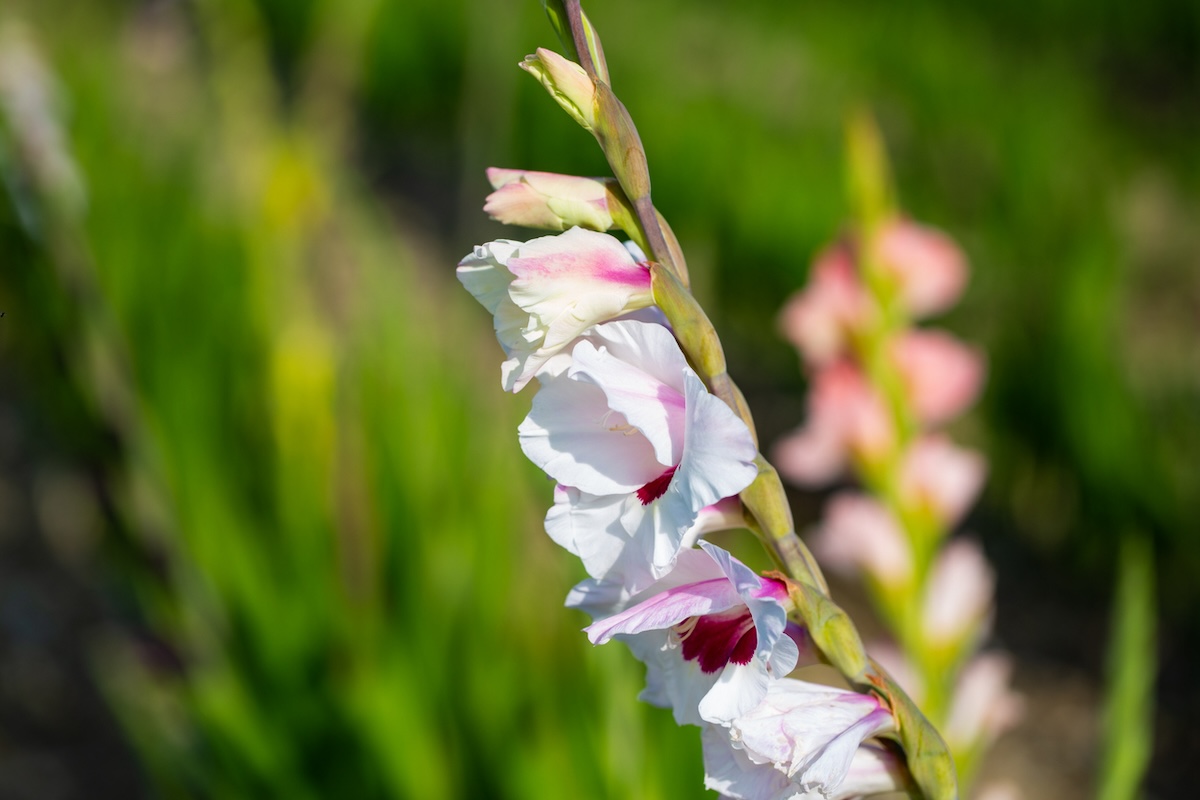
Overwintering Gladiolus
Gladiolus winter care for gardeners living in Zones 8 to 10 is generally low effort. Simply leave gladiolus bulbs in the ground with a heavy layer of mulch, and the gladioli will return as perennials. Gardeners in lower zones (especially Zones 5 and 6) will need to lift bulbs from the ground and store them indoors for the winter. Those in Zone 7 often can leave the bulbs; they might need to experiment, since hardiness can depend on sun exposure and soil warmth.
When is the best time to bring gladiolus indoors?
Regardless of whether you plan to leave glads in the ground over winter or lift them for storage, it is important to allow them to wither naturally in the fall rather than pruning them back. This lets the plants take in as much energy as possible and store it in the corms for the winter, resulting in a more robust plant in the spring. When it’s time to plant fall bulbs, remove the gladiolus bulbs at the same time.
How do you overwinter gladiolus?
If leaving gladiolus in the ground (typically Zones 7 to 10):
- Once plants have died back, trim some of the stems back, but leave enough in place to mark the spot where the bulbs are planted.
- Apply fertilizer and work it into the soil.
- Apply a generous layer of mulch, at least 4 to 6 inches.
If lifting from the ground (typically Zones 6 and below):
- Once plants have died back, gently pull or lift them from the ground with a hand trowel.
- Dig up any additional corms that may remain in place.
- Where needed, trim back the stem.
- Allow bulbs to cure (dry out) before storing in a well-ventilated, dry place with temperatures between 60 and 70 degrees Fahrenheit and out of direct sunlight. This will take about 3 weeks.
- Once dry, remove old dried corms from the main (mother) corm.
- Treat with fungicide or insecticide if necessary.
- Store dried bulbs in 2 to 3 inches of sand, sawdust, wood shavings, or peat moss in a container that has air ventilation. Don’t pack in airtight containers because any trapped moisture will cause mildew and rot the bulbs.
Looking for more flowers that stun in the garden and in flower arrangements? Check out our guides on growing geranium, calla lilies, and zinnias.
